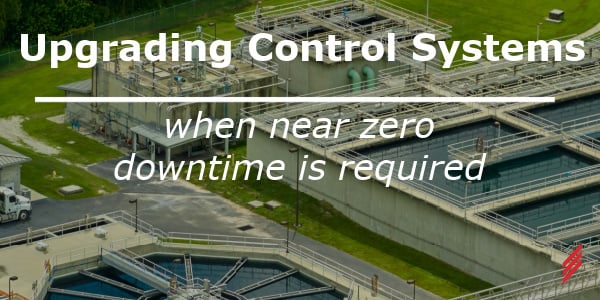Upgrading your obsolete control system - Why and how to ground your ungrounded control system before a system upgrade
by Julie Gruenholz on Feb 9, 2017 4:47:06 PM

Upgrading your absolete control system is a helpful 7-part blog series addressing the important technical asspects of upgrades and written by an industry professional with over 25 years of experience.
Here are links to the other blogs in this series:
6 Questions to Ask When Upgrading an Obsolete Control System While Keeping Your Plant RunningKISS and 5 Other Items to Consider when Choosing to Upgrade Your PLC Platform
Replacing Your Obsolete Control System. Step 1 – Replace the SCADA
Replacing Your Obsolete Control System. Step 2 – Upgrade the PLC Hardware
Replacing Your Obsolete Control System. Step 3 – Key Considerations when choosing the new SCADA/HMI.

Why and how to ground your ungrounded control system before a system upgrade.
This is not a new debate… Should you have a grounded or an ungrounded control system?
The first control system I ever upgraded was pretty much ungrounded. It was 110VAC relay logic with a couple resistors trying to hold the center at ground. The original design (installed in 1973) was selected because 55 volts to ground was considered intrinsically safe. In order to install a PLC in 1991, the system had to be modified so it was a solid 120VAC to ground. The PLC dictated that all of the IO and the entire control system share a common ground. As our plant electricians embarked on this ground relocation process, without interrupting the integrity of the system, they found that many unintentional shorts had developed over the years that had gone unnoticed. This opened my eyes to the fact that it is better to have a known potential to ground on all devices rather than an unknown floating potential that may or may not keep your system from shutting down.
Later when I became a contractor and worked on many sites that have a 24VDC control system, I was introduced to the fact that many engineers believe that an ungrounded 24VDC system is the way to go. On systems like these, undetected shorts to ground can develop. One ground is fine, but if you get two grounds, your control system can operate erratically and the resulting system can be almost impossible to troubleshoot.
Always tie your 24VDC negative to the panel 120VAC ground!
Build redundancy and appropriate fusing into your system to detect shorts immediately. Do not rely on a floating potential to mask problems. A known failure is always better than an unknown floating potential that can cause erratic behavior. I encourage you to ground your ungrounded system before upgrading your system to a new PLC. This might be painful and scary but knowing all your problems before moving forward is always the best strategy.
This blog answers question #5 of “6 Questions to Ask When Upgrading an Obsolete Control System while Keeping Your Plant Running.” I hope that you have enjoyed these blogs and please feel free to email me jgruenholz@hallam-ics.com with your comments or thoughts or reach out to us throug our
About the Author
Julie has left Hallam-ICS to pursue other endeavors, but her contributions to the company continue to be valued.
About Hallam-ICS
Hallam-ICS is an engineering and automation company that designs MEP systems for facilities and plants, engineers control and automation solutions, and ensures safety and regulatory compliance through arc flash studies, commissioning, and validation. Our offices are located in Massachusetts, Connecticut, New York, Vermont and North Carolina and our projects take us world-wide.
You May Also Like
These Related Stories

Replacing Your Obsolete Control System. Step 2 – Upgrade the PLC Hardware

Upgrading Control Systems when Near Zero Downtime is Required




No Comments Yet
Let us know what you think